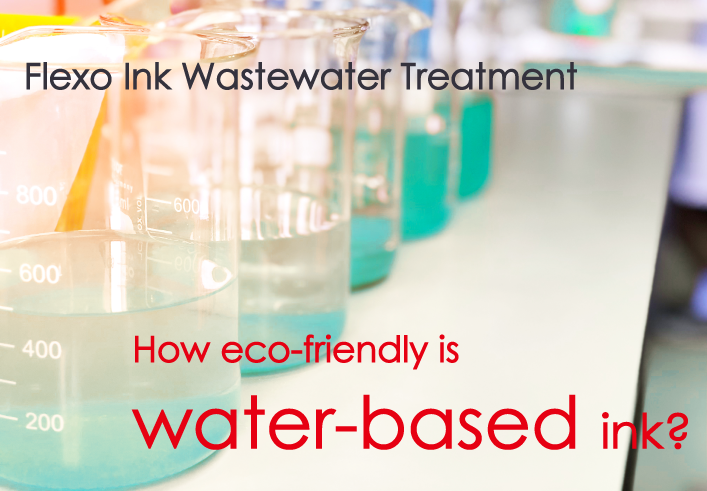Ink Wastewater Treatment: How eco-friendly is water-based ink?

Yes, when compared to solvent-based ink, water-based ink emits much fewer VOCs into the air making it more eco-friendly. However, this doesn’t mean that during production one can just wash up the ink waste and simply let it go down the drain. The wastewater from water-based ink contains pigments, dynes, vehicles, auxiliary solvents, and additives that are harmful to the environment. Water-based ink is better, but it is not perfect. The wastewater needs to be treated before it can be discharged. In this article, we are going to explore two different wastewater treatments used in practice which are chemical treatment and electrolysis treatment.
Chemical treatment – To lower the wastewater pH level to 2.5~4 for breaking the ink emulsion. An emulsion is a mixture of two or more liquids that usually don’t mix. After breaking the ink emulsion, the pH level is elevated to 8~9.5 while adding coagulant to achieve precipitation and coagulation. The solids will form a pin floc. Pin floc occurs when the charge value on the surface of the molecules is reduced to near zero. This way the molecules will coagulate, otherwise, the molecules repel one another like a magnet. It is important to note that overdosing the coagulant will cause the surface charge of the molecules to swing to the other charge value and the pin floc will be gone. Once the pin floc is formed, the next step is to flocculate. Flocculation refers to a process by which fine particles are clump together into a floc. This is done by introducing flocculant into the wastewater. The long-chain molecule of the flocculant has many receptors sites and is used to enmesh the pin floc, which can then be separated from the water.
Electrolysis – electrolytic wastewater treatment is less used in comparison to chemical treatment. The goal of electrolysis is to achieve a similar purpose as the chemical treatment, which is to achieve coagulation and flocculation for separation; but by using electricity instead of chemicals. When an electrical current is applied, the coagulant is generated by the oxidation of the electrode. The release of ions from the electrode neutralizes the charges of the wastewater particles and thereby initiating coagulation. The commonly used electrode includes Iron and Aluminum. Then the electrically generated tiny bubbles of the hydrogen and oxygen gas interact with pollutant particles, floating to the surface of the water body for separation.
There are many different ways to treat ink wastewater. Depending on the ink content, one will choose a treatment that best matches one needs. Many times, a combination of processes is used together to achieve the most effective result. At the end of the day, it’s a balance between treatment cost, purification quality, and the stringency of the local environmental regulation.
Source:

Article by Daywey Chen, KYMC


























